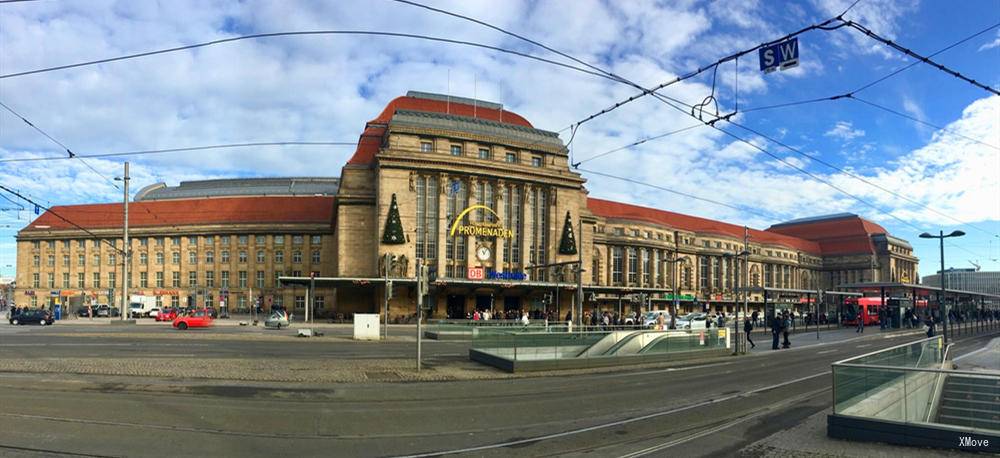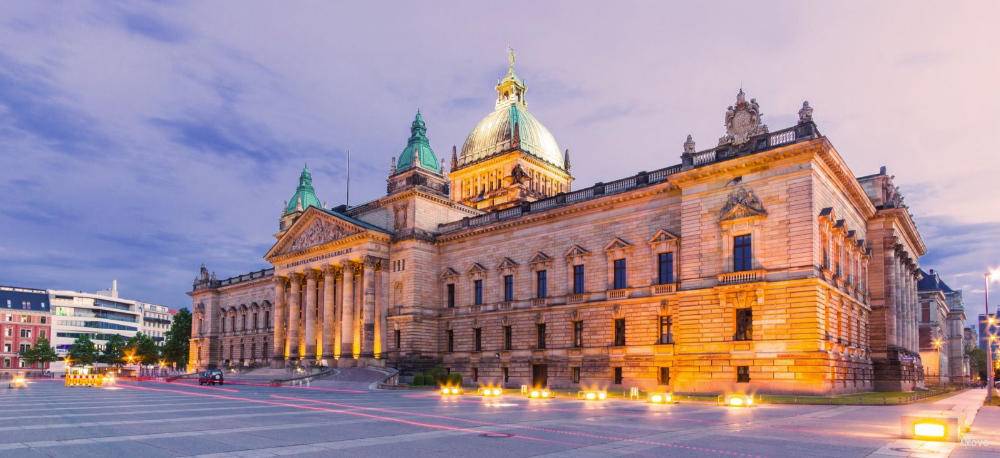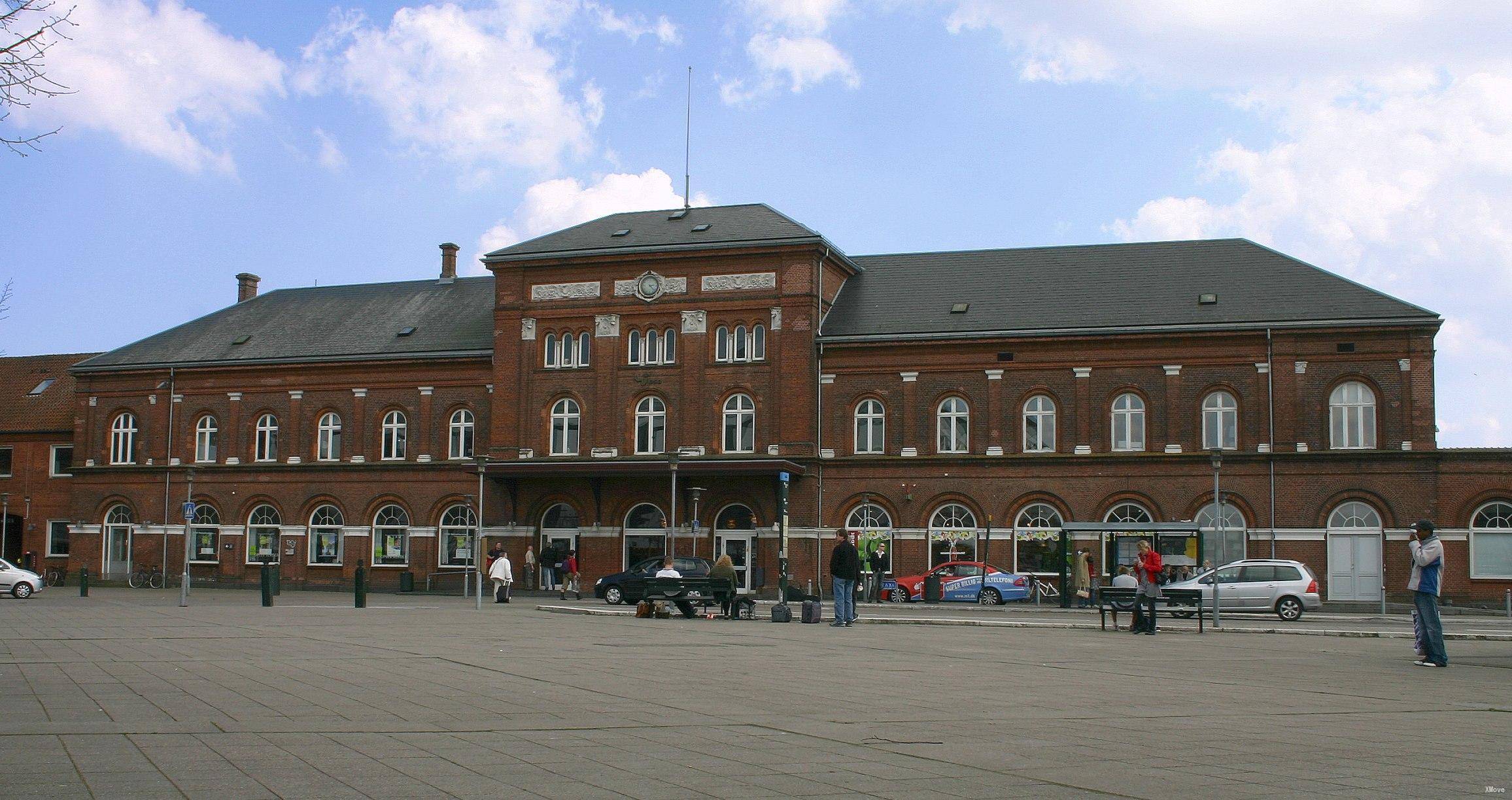Kolding St to Leipzig Central: Trains, Buses, Fares, Today's Connections, Routes, Duration, Types of Trains, Station Guides, Tips, Journey
Denmark Train Tickets
Scan QR code, download G2Rail App to see Kolding St's more live update, station guide, plan and photos



Train schedule Kolding St to Leipzig Central(Leipzig Hbf)
Popular train routes departing from Kolding St
* Budapest Central(Budapest Keleti Pályaudva)
* Brno Central(Brno Hl.N.)
* Poznan Gl.
* Soltau(Han)
* Linz Central(Linz Hbf)
* Goettingen(Göttingen)
* Hamburg Airport(Hamburg Flughafen)
Popular train routes arriving in Kolding St
* Gitnang Istasyon Ng Düsseldorf(Düsseldorf Hbf)
* Paris North Station(Paris Gare Du Nord)
* Aarhus
* Strasbourg
* Dortmund Gitnang Istasyon(Dortmund Hbf)
* Amsterdam Central(Amsterdam Centraal)
* Istasyon Ng Gitnang Berlin(Berlin Hbf)
Popular train routes departing from Leipzig Central(Leipzig Hbf)
* Erfurt Hbf (Intercity Hotel)
* Bremen Central(Bremen Hbf)
* Hof Central(Hof Hbf)
* Jena
* Zürich Hb
* Friedland(Han)
* Berlin (Main Underground)(Berlin Hbf (Tief))
Popular train routes arriving in Leipzig Central(Leipzig Hbf)
* Estación Principal De Dusseldorf(Düsseldorf Hbf)
* Estrasburgo(Strasbourg)
* Utrecht Central(Utrecht Centraal)
* Dornbirn
* Bydgoszcz Glowna
* Mayrhofen En El Zillertal(Mayrhofen Im Zillertal)
* Nimega(Nijmegen)
* Estación Central De Berlín (Profunda)(Berlin Hbf (Tief))
* Malinas(Mechelen)
* Bad Krozingen East(Bad Krozingen Ost)
* Aeropuerto De Leipzig / Halle(Leipzig/Halle Flughafen)
* Estación Principal De Bochum(Bochum Hbf)
* Aeropuerto De Berlín Schönefeld(Berlin Schönefeld Flughafen)
* Praha Hlavní Nádraží (Prag Hl. N.)
Leipzig Central
The Leipzig Hbf is a terminal train station, so the connection between long-distance trains only needs to go from one canyon/platform/track to the other through the huge main hall - it is one of the largest stations in Europe.
Leipzig Hbf is located on two floors of a large shopping mall, with escalators and elevators leading to the main lobby. Therefore, it is an ideal place to buy any travel essentials. The shops in the mall are open 7 days a week.
Most of the food/beverage shops at Leipzig Hbf are also located in this mall.
If you want to connect to the S-Bahn train in the city centre, the entrance to these platforms is at the far right of the square - when leaving the canyon/platform, long distance and Regio trains will arrive.
Leipzig Central - Station Guide | Departures and Arrivals | Popular Routes

Kolding (Danish pronunciation: [ˈkʰɒleŋ]) is a Danish seaport located at the head of Kolding Fjord in the Region of Southern Denmark. It is the seat of Kolding Municipality. It is a transportation, commercial, and manufacturing centre, and has numerous industrial companies, principally geared towards shipbuilding. The manufacturing of machinery and textiles and livestock export are other economically significant activities. With a population of 90,066 (1 January 2014), the Kolding municipality is the seventh largest in Denmark. The city itself has a population of 60,854 (1 January 2019) and is also the seventh largest city in Denmark. The city is part of the Triangle Region, which includes the neighbouring cities of Fredericia and Vejle.
Kolding - Guide, Attractions, Tours, Sightseeings | Train from/to Kolding | Popular RoutesLeipzig (, also US: , German: [ˈlaɪptsɪç] ; Upper and Lower Sorbian: Lipsk; Upper Saxon: Leibzsch) is the most populous city in the German federal state of Saxony. With a population of 587,857 inhabitants as of 2018 (1.1 million residents in the larger urban zone), it is Germany's eighth most populous city as well as the second most populous city in the area of former East Germany after (East) Berlin. Together with Halle (Saale), the largest city of the neighbouring state of Saxony-Anhalt, the city forms the polycentric conurbation of Leipzig-Halle. Between the two cities (in Schkeuditz) lies Leipzig/Halle International Airport. Leipzig is located about 160 kilometres (99 mi) southwest of Berlin in the Leipzig Bay, which constitutes the southernmost part of the North German Plain, at the confluence of the White Elster River (progression: Saale→ Elbe→ North Sea) and two of its tributaries: the Pleiße and the Parthe. The name of the city as well as the names of many of its boroughs are of Slavic origin. Leipzig has been a trade city since at least the time of the Holy Roman Empire. The city sits at the intersection of the Via Regia and the Via Imperii, two important medieval trade routes. Leipzig was once one of the major European centres of learning and culture in fields such as music and publishing. Leipzig became a major urban centre within the former East Germany after the Second World War, but its cultural and economic importance declined. Events in Leipzig in 1989 played a significant role in precipitating the fall of communism in Central and Eastern Europe, mainly through demonstrations starting from St. Nicholas Church. Since the reunification of Germany, Leipzig has undergone significant change with the restoration of some historical buildings, the demolition of others, and the development of a modern transport infrastructure.Leipzig today is an economic centre, the most livable city in Germany, according to the GfK marketing research institution and has the second-best future prospects of all cities in Germany, according to HWWI and Berenberg Bank. The city is one of two seats of the German National Library (together with Frankfurt), as well as the seat of the German Federal Administrative Court. Leipzig Zoo is one of the most modern zoos in Europe and ranks first in Germany and second in Europe according to Anthony Sheridan. Since the opening of the Leipzig City Tunnel in 2013, Leipzig forms the centrepiece of the S-Bahn Mitteldeutschland public transit system. Leipzig is currently listed as a Gamma World City, Germany's "Boomtown" and as the European City of the Year 2019.Leipzig has long been a major centre for music, both classical as well as modern "dark alternative music" or darkwave genres. The Oper Leipzig is one of the most prominent opera houses in Germany. It was founded in 1693, making it the third-oldest opera venue in Europe after La Fenice (Venice, Italy) and the Hamburg State Opera (Hamburg, Germany). Leipzig is also home to the University of Music and Theatre "Felix Mendelssohn Bartholdy". It was during a stay in this city that Friedrich Schiller wrote his poem "Ode to Joy". The Leipzig Gewandhaus Orchestra, established in 1743, is one of the oldest symphony orchestras in the world. Johann Sebastian Bach is one among many major composers who lived and worked in Leipzig.
Leipzig - Guide, Attractions, Tours, Sightseeings | Train from/to Leipzig | Popular Routes
Denmark Train Tickets
Scan QR code, download G2Rail App to see Kolding St's more live update, station guide, plan and photos



Hot Journeys
* Milan -> Venice(Venezia)
* Venice(Venezia) -> Rome(Roma)
* Dusseldorf(Düsseldorf) -> Munich(Müchen)
* Milan -> Venice(Venezia)
* Milan -> Lucerne(Luzern)
* La Spezia(La Spezia) -> Manarola
* Frankfurt Airport(Frankfurt Flughafen) -> Stuttgart
* Rovaniemi(Rovaniemi) -> Helsinki(Helsinki)
* Dusseldorf(Düsseldorf) -> Frankfurt

